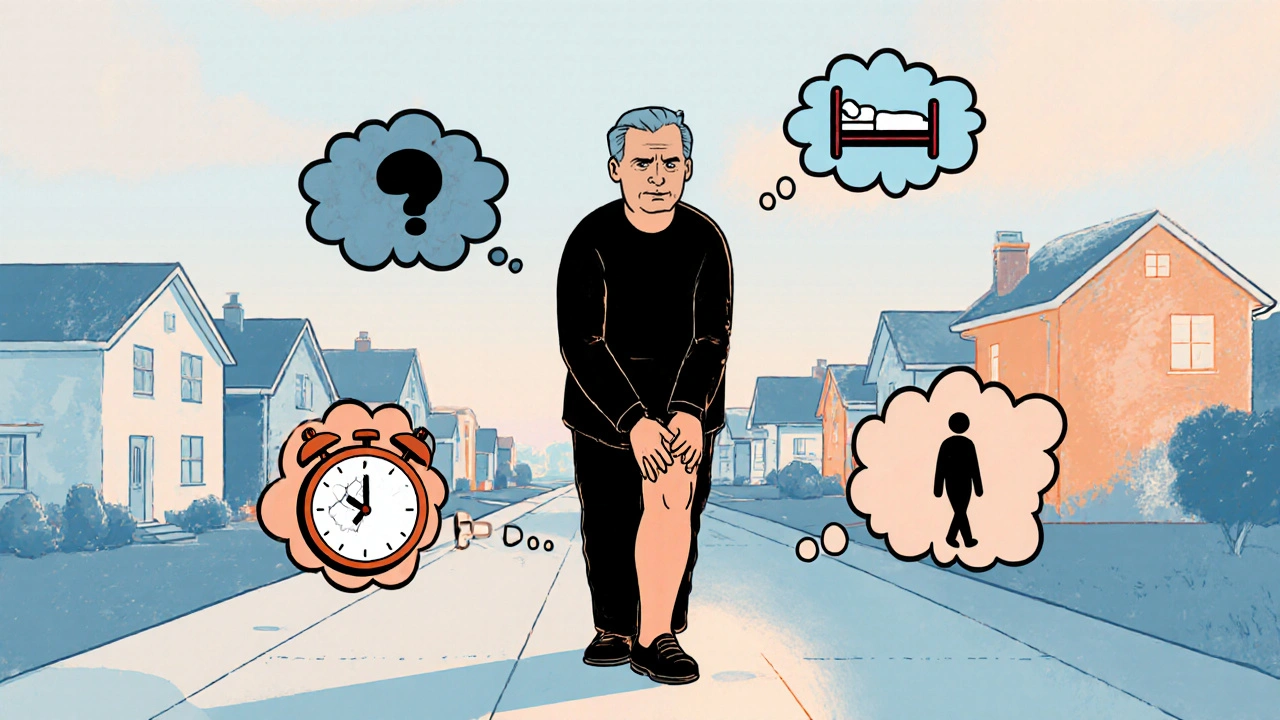Intermittent Claudication – What It Is and How to Manage It
When dealing with intermittent claudication, painful cramping in the calves, thighs or buttocks that appears during walking and eases with rest. Also known as claudication, it signals that blood isn’t reaching the muscles fast enough.
It is most commonly a symptom of peripheral artery disease, a narrowing of the leg arteries that limits blood flow and oxygen delivery. The condition creates a cascade: reduced flow → muscle pain → limited mobility. That chain explains why doctors often ask about walking distance when they suspect PAD.
One of the first‑line medicines for this problem is cilostazol, an antiplatelet drug that also widens blood vessels, helping patients walk farther before pain starts. Studies show a 30‑50% increase in walking distance for many users, though it can cause headaches or mild nausea in some people.
Medication works best when paired with exercise therapy, a supervised walking program that gradually extends the time you can walk without pain. The idea is simple: gentle stress forces the vessels to adapt, forming tiny new pathways that improve circulation over weeks.
Key Management Strategies
Beyond drugs and walking, lifestyle tweaks make a huge difference. Quitting smoking is the single most effective step – smokers develop PAD up to four times faster than non‑smokers. Cutting saturated fats, eating more fruits and veggies, and keeping cholesterol in check all shrink plaque buildup.
When pain remains severe despite medication and exercise, doctors may recommend revascularization. Angioplasty involves a tiny balloon that widens the blocked artery, often followed by a stent to keep it open. In some cases, a surgical bypass creates a new route for blood flow. Both approaches can restore walking ability, but they carry higher risks and cost.
Our collection of articles dives deeper into each of these areas. You’ll find practical guides on safely buying generic antiplatelets like clopidogrel, tips for storing medications such as cilostazol, and side‑effect checklists for common PAD drugs. We also cover how to choose reputable online pharmacies – a must‑know if you’re looking for affordable options.
Understanding intermittent claudication helps you take the right steps toward better leg health. Below you’ll discover detailed information on symptoms, risk factors, medication choices, exercise plans, and when to consider procedures. Let’s get you moving without pain.

Emotional Coping Strategies for Intermittent Claudication
Learn how to handle the emotional challenges of intermittent claudication with practical coping strategies, exercise tips, support options, and when to seek professional help.
